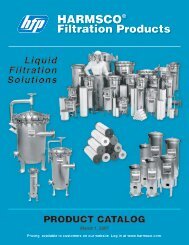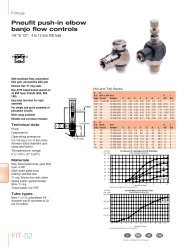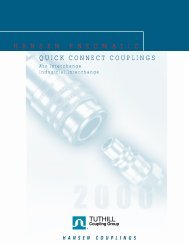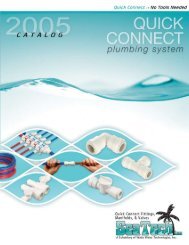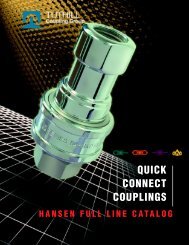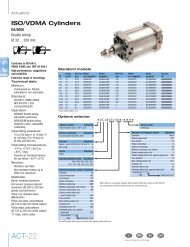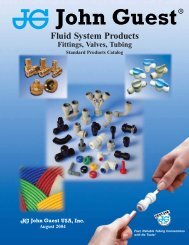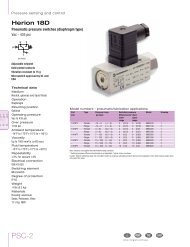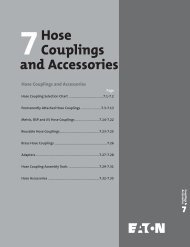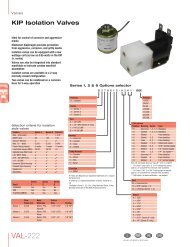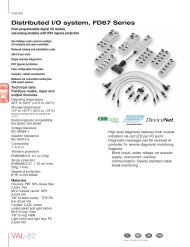FilmTec Technical Manual - Chester Paul Company
FilmTec Technical Manual - Chester Paul Company
FilmTec Technical Manual - Chester Paul Company
You also want an ePaper? Increase the reach of your titles
YUMPU automatically turns print PDFs into web optimized ePapers that Google loves.
Figure 1.1 Major desalination processes8,000Brackish Water RO Membranes50 12,000Distillation20,000Sea Water ROMembranes50,000105050Low Energy BW RO MembranesIon Exchange3006002,000Reverse OsmosisElectrodialysis10,000Raw Water Salt Concentration (mg/l)50,000100,000The various filtration technologies which currently exist can be categorized on the basis of the size of particles removed froma feed stream. Conventional macrofiltration of suspended solids is accomplished by passing a feed solution through the filtermedia in a perpendicular direction. The entire solution passes through the media, creating only one exit stream. Examples ofsuch filtration devices include cartridge filters, bag filters, sand filters, and multimedia filters. Macrofiltration separationcapabilities are generally limited to undissolved particles greater than 1 micron.For the removal of small particles and dissolved salts, crossflow membrane filtration is used. Crossflow membrane filtration(see Figure 1.2) uses a pressurized feed stream which flows parallel to the membrane surface. A portion of this streampasses through the membrane, leaving behind the rejected particles in the concentrated remainder of the stream. Sincethere is a continuous flow across the membrane surface, the rejected particles do not accumulate but instead are sweptaway by the concentrate stream. Thus, one feed stream is separated into two exit streams: the solution passing through themembrane surface (permeate) and the remaining concentrate stream.Figure 1.2 Crossflow membrane filtrationThere are four general categories of crossflow membrane filtration: microfiltration, ultrafiltration, nanofiltration, and reverseosmosis.Microfiltration (MF)Microfiltration removes particles in the range of approximately 0.1 to 1 micron. In general, suspended particles and largecolloids are rejected while macromolecules and dissolved solids pass through the MF membrane. Applications includeremoval of bacteria, flocculated materials, or TSS (total suspended solids). Transmembrane pressures are typically 10 psi(0.7 bar).Ultrafiltration (UF)Ultrafiltration provides macro-molecular separation for particles in the 20 to 1,000 Angstrom range (up to 0.1 micron). Alldissolved salts and smaller molecules pass through the membrane. Items rejected by the membrane include colloids,proteins, microbiological contaminants, and large organic molecules. Most UF membranes have molecular weight cut-offvalues between 1,000 and 100,000. Transmembrane pressures are typically 15 to 100 psi (1 to 7 bar).Page 8 of 180 ® Trademark of The Dow Chemical <strong>Company</strong> ("Dow") or an affiliated company of Dow Form No. 609-00071



